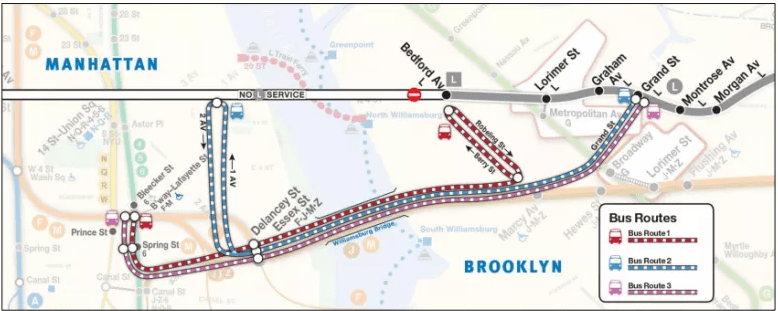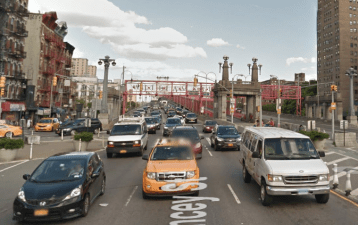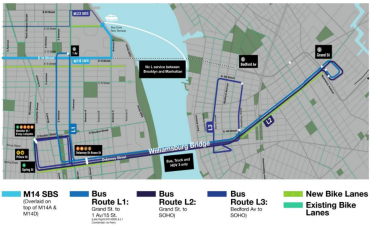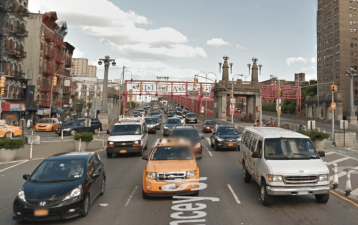Will Brooklyn Streets Get the Transit Priority They Need During the L Train Shutdown?
The MTA will run shuttle buses every two to four minutes, and DOT is considering dedicated space for buses on the Williamsburg Bridge and "some of the approaches."

During the L train shutdown starting in April 2019, the MTA plans to run shuttle buses every two to four minutes at rush hour connecting Williamsburg to Manhattan. Some sort of transit priority treatment is on the table for the Brooklyn streets where those buses would connect to the Williamsburg Bridge, but exactly what DOT has in mind isn’t clear yet.
The MTA and DOT gave a status update on plans for the L train outage last night to the Brooklyn Community Board 1 transportation committee meeting [PDF]. It was broadly similar to a presentation in Manhattan on Monday, in which the agencies discussed potential bus lane scenarios on the Williamsburg Bridge and 14th Street. On the Brooklyn side, bus routes linking to the Bedford and Grand Street L stations will also need to bypass car traffic.
“Running buses over [the bridge] and hoping that people take those buses wasn’t looking like a very strong option for folks, and we were hearing a lot from the workshops, from what you all told us, that you want dedicated space on the bridge and some of the approaches,” DOT planner Jeff Peel told attendees. “If we don’t do that, the bus isn’t an attractive option.”
If the bus service isn’t effective, “that then creates more traffic and more congestion, further slowing down the buses,” Peel said.
There are three proposed shuttle bus routes: one linking the Grand Street station to 14th Street via Grand and First and Second Avenues, one between Grand and Broadway/Lafayette with a connection at Delancey/Essex, and another between the Bedford station and Broadway/Lafayette.
“We’re going to try to match the service to the [existing] demand,” said Judy McClain, the MTA’s senior director for service planning.
To run reliable, high-capacity shuttle buses, boarding will need to be fast and interference from other traffic will have to be minimal. Otherwise, buses will bunch up and consistent two- to four-minute headways can’t be maintained. One way to speed boarding would be to make the shuttles free — a decision that’s still to be determined, said McClain. To prevent car traffic from interfering, dedicated street space for buses will be essential.
Street design falls under the purview of NYC DOT. “We’re trying to get the buses moving quickly and reliably,” Peel said. “But as DOT we also have a responsibility to look at the regional traffic network. This is a major crossing for a lot of people, for a lot of truck traffic, for buses. We want to make sure that as we’re doing that we’re not having ripple effects through our transportation network.”
On 14th Street, DOT and MTA have said they’re considering a full-fledged car-free busway. For the Brooklyn side, Transportation Alternatives has proposed a Grand Street “PeopleWay” dedicated to buses, bikes, and pedestrians. Reps gave the impression yesterday they have yet to be convinced.
“We’re looking at it,” Peel told people who asked about car-free space on Grand Street and elsewhere in the neighborhood. “Grand Street… is not 14th Street in terms of sheer volume of ridership and sheer volume of traffic there.”



